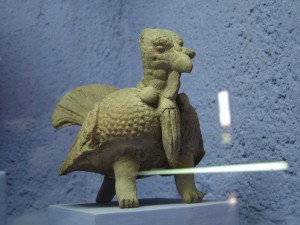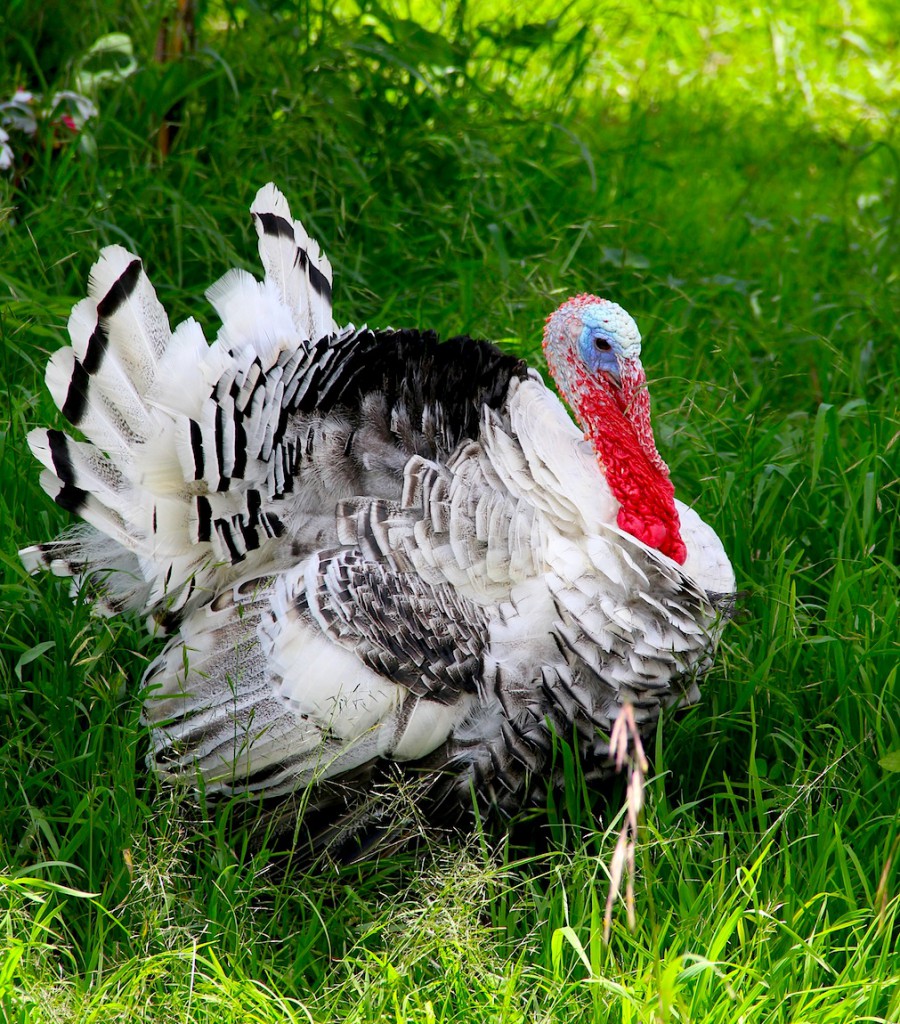Pavo is the Spanish word for turkey in Spain, but Mexicans have their own word in Spanish, guajolote. This is a Hispanized loan from Nahuatl, huexolotl, for turkey cock. A turkey hen was a cihuahuexolotl (or zohuahuexolotl), according to Alonso de Molina’s sixteenth-century vocabulary of Nahuatl. The continuing prevalence of turkeys in indigenous communities represents a remarkable continuity over the millennia.
Visit Justin Kerr’s Maya Vase Data Base and do a search for “turkey” — scroll and review the images. You have permission to copy the images into PowerPoints for educational purposes.
Here’s an excerpt from a sixteenth-century account about tributes, written in Nahuatl by a Nahua notary who was taking a household census that not only counted the number of people in each household, but also what they paid in tribute: “ynic çexiuhtia çetetl- tequicuachtl- : çetetl-canavac nauh:tetl totolli çepovaltetl totolltetl castolpovalli chilli : çe yavalli yztatl- ya yxquich yn itequiuh tale cacavatl” = “so that in one year it is one tribute cloak, one narrow cloak, four turkey hens, 20 turkey eggs, 300 chiles, and one cake of salt. That is all of his [a head-of-householder’s] tribute; no cacao.” (Cuernavaca region, ca. 1540s) [Source: The Book of Tributes: Early Sixteenth-Century Nahuatl Censuses from Morelos, ed. and transl. S. L. Cline, (Los Angeles: UCLA Latin American Center Publications, 1993), 140-141.] You can find more examples of references to turkeys and turkey eggs in colonial manuscripts in Nahuatl by searching our free, online dictionary.
The turkey is an animal that was domesticated in both Mesoamerica and the southwestern U.S., and it is now consumed across the globe. The original turkeys may have been replaced by more highly inbred strains. Our Thanksgiving turkeys made their way from Mesoamerica to Spain and Europe, and then they were re-introduced to North America, according to recent research. This study also reveals that the Southwest only had one breed of turkey originally, but it was controlled carefully and traded widely within the region.
In this same study we learn that domesticated turkeys were first raised in the Americas for their feathers and ritual use, beginning about 2,000 years ago. In the Southwest, turkey feathers were used in making blankets that are said to be warmer than rabbit fur. The change in usage of the turkey is revealed through the presence of lots of turkey excrement and very few bones (except bones of intact birds). Then, about 1,000 years ago, they were being raised for their meat, as bones begin to appear in a more dispersed fashion in food waste. This was also a time of population growth and a growing scarcity in some places of hunting prey, such as deer and antelope. By about 1200 (Post-Classic times), the turkey bone is the most common bone in middens (garbage dumps for food waste) among the Pueblo people. Dr. Ron Spores could probably tell us how common turkey bones might be in middens of the Mixteca.
The turkey, below, is a representation found in the Rufino Tamayo museum in Oaxaca. It is from Classic Period Veracruz (200 C.E. to 750 C.E.). Please excuse the reflections from the glass case!

Classic-era turkey representation from Veracruz. Notice the vestiges of red paint on the eye. (S. Wood, 2010)

Turkeys for sale in a market. Colonial Tlaxcala as recreated in a mural, Memory Museum in Tlaxcala. (S. Wood, 2003)
Below, we see a representation of a turkey head painted with multicolored slip on pottery. This sherd was found among other post-Classic archaeological artifacts in Coixtlahuaca, in the Mixteca Alta (state of Oaxaca).
During the Guelaguetza parade or street celebrations in Oaxaca in the month of July, you may be able to see turkey-shaped fireworks figures being carried during the day and set afire at night, while their bearers will charge the crowd to generate excitement.

Turkey in Guelaguetza activities. This one has fireworks attached to it (not yet alight). (Photo, S. Wood, July 2010)

Papier maché guajolote in the Guelaguetza calenda (parade) in 2014. (Photo, R. Haskett, 11 July 2014)

Another turkey in a calenda in Oaxaca in July 2014. This one is dedicated to San Juan Diego. (Photo, S. Wood)
Turkeys and alcohol are given as gifts in Teotitlán del Valle to help with the meals relating to special festivals, such as the Fiesta de la Santa Cruz (Holy Cross), as relayed in this story.
With Spanish colonization, the chicken was introduced into the Mesoamerican diet. The consumption of turkey would live on in remote areas, but eventually the chicken, deemed easier to raise, would outpace the turkey in popularity. Manuscripts refer to both, distinguishing the “hen of Castile” from the “hen of this land.”










